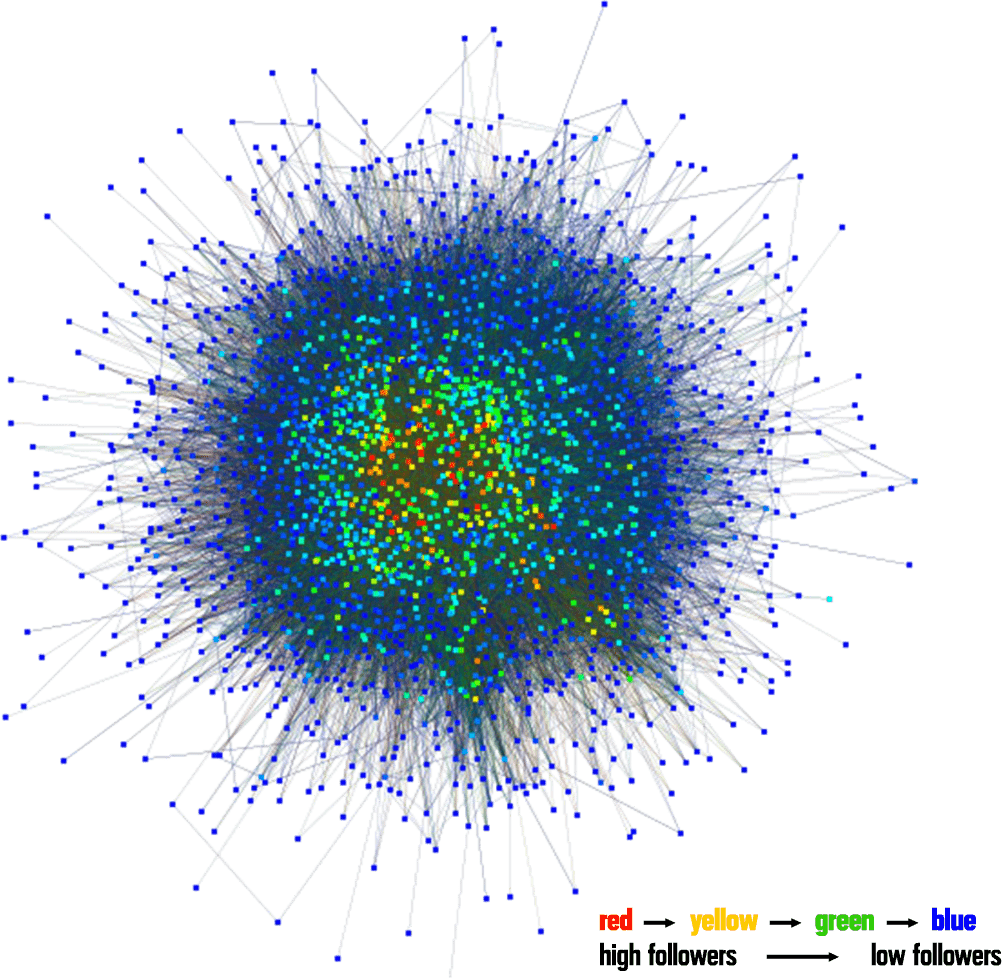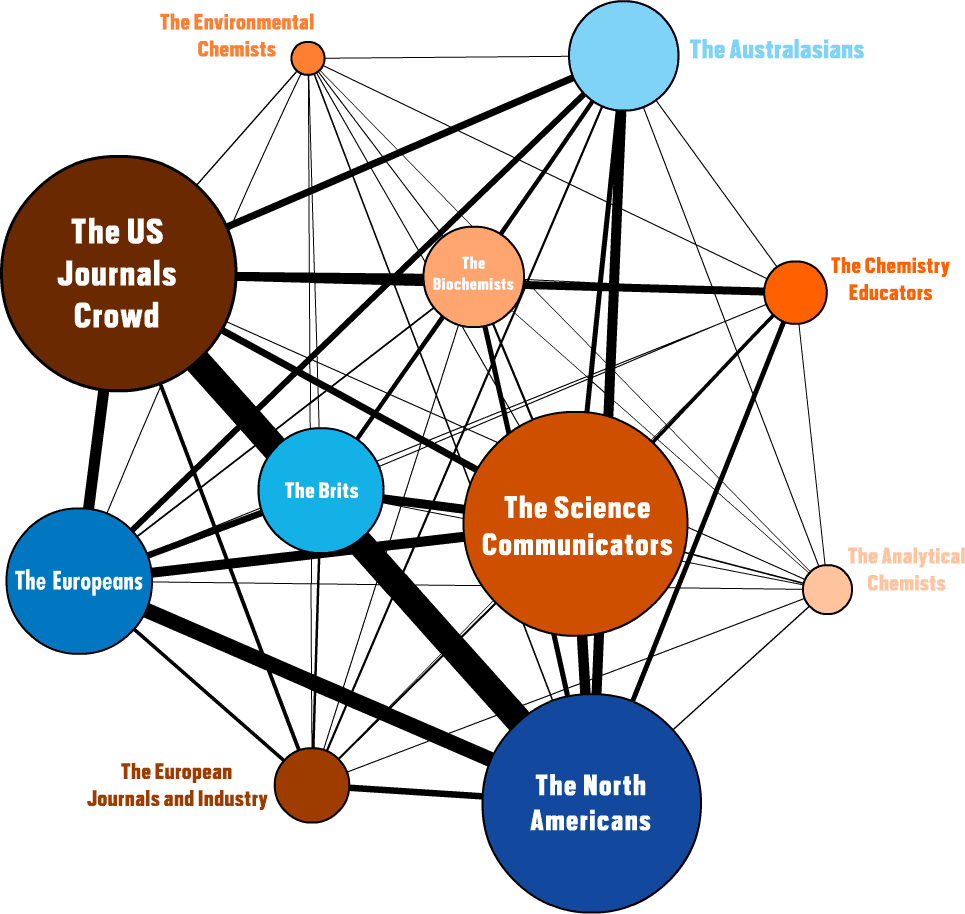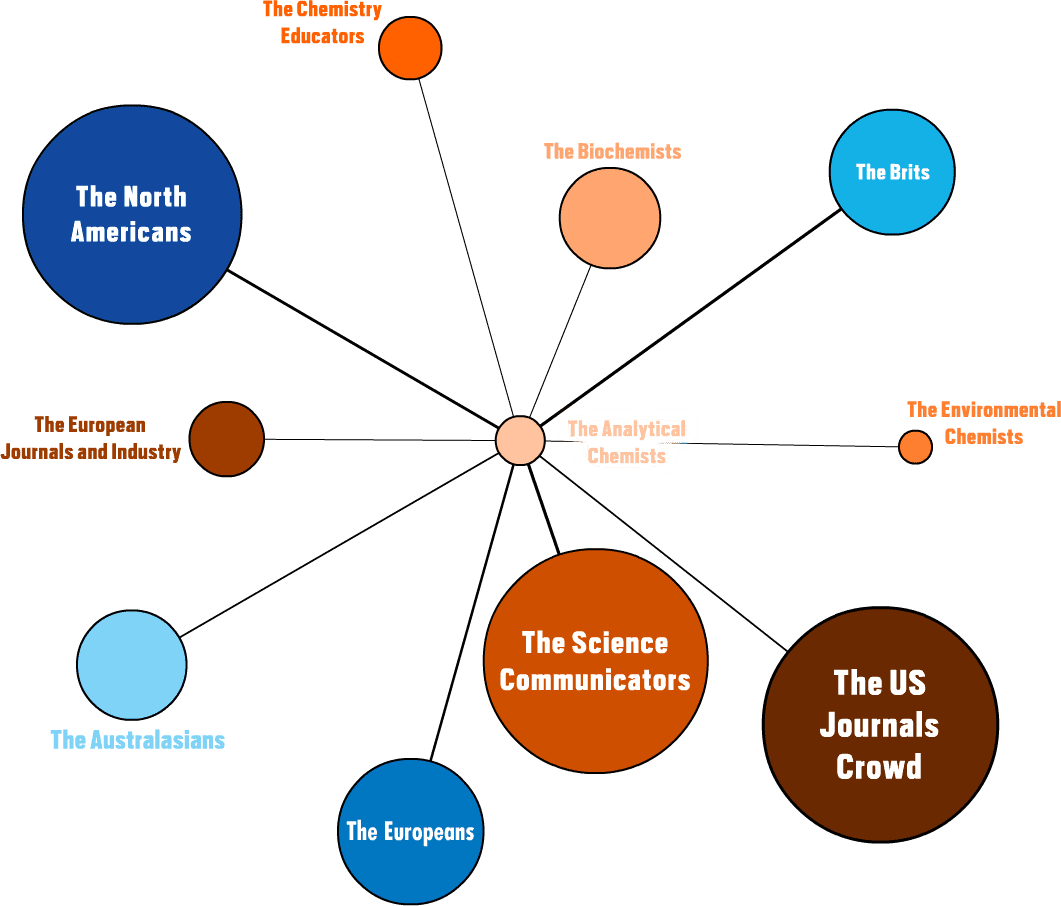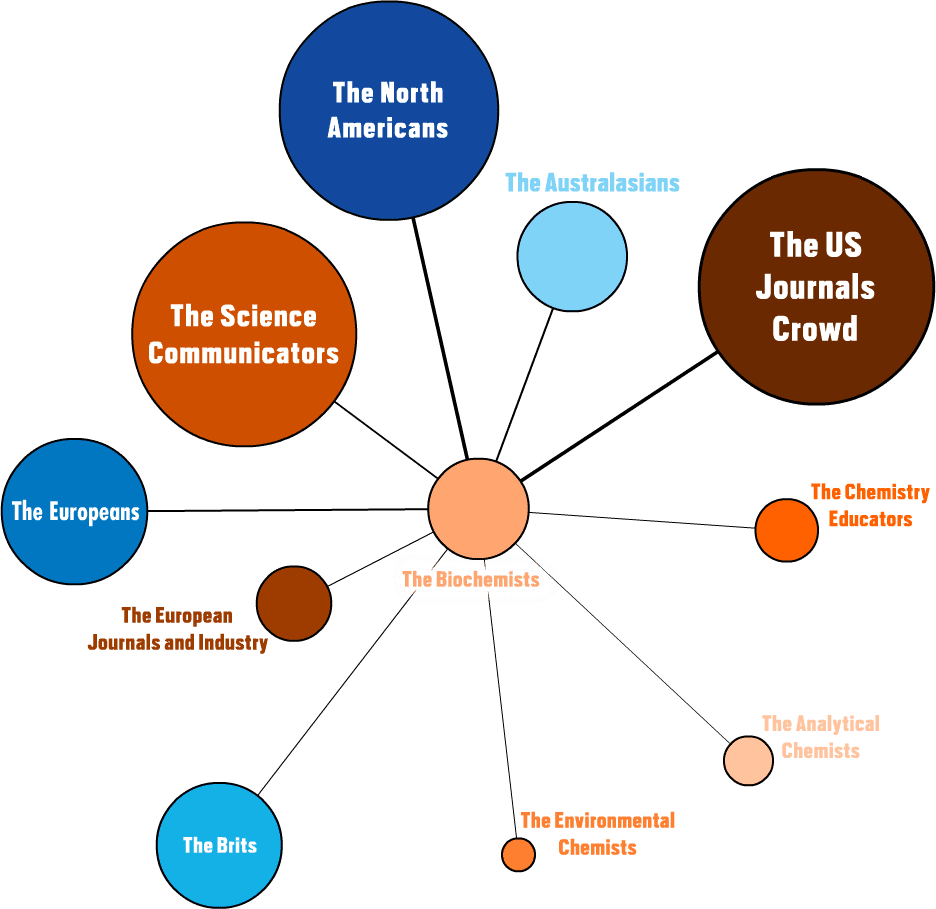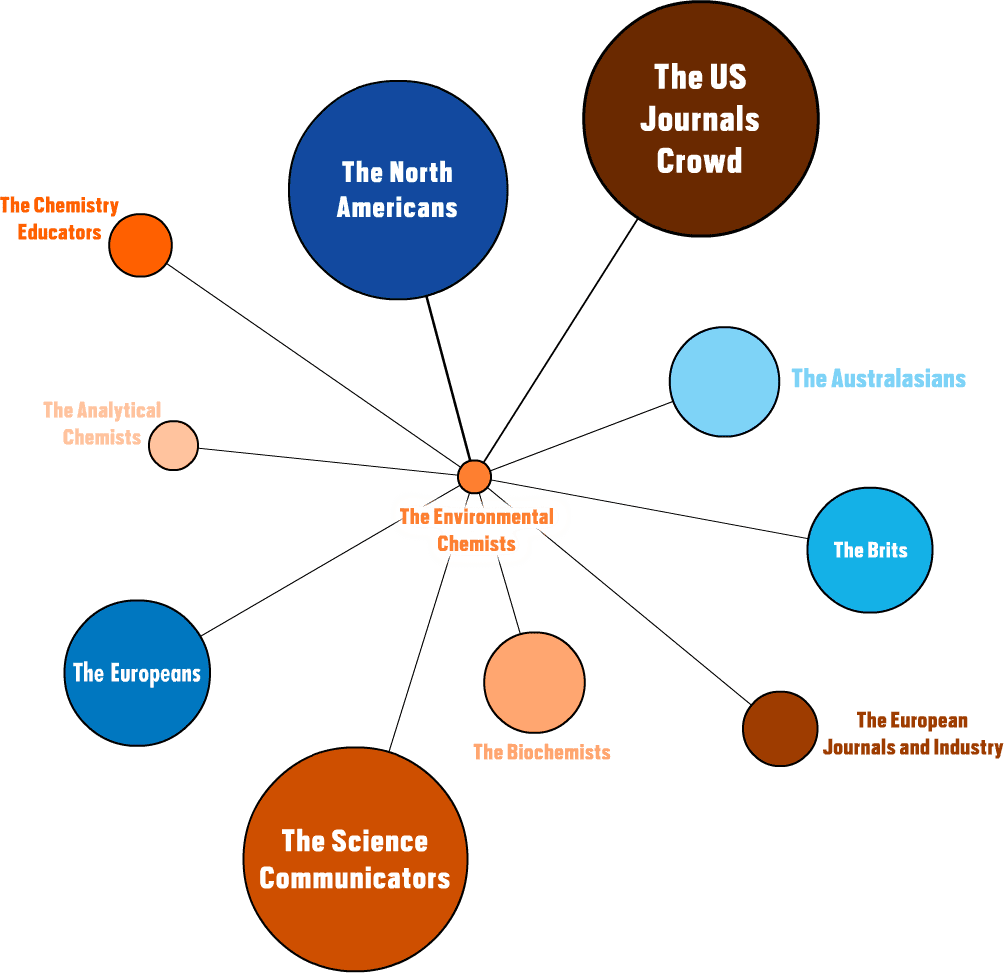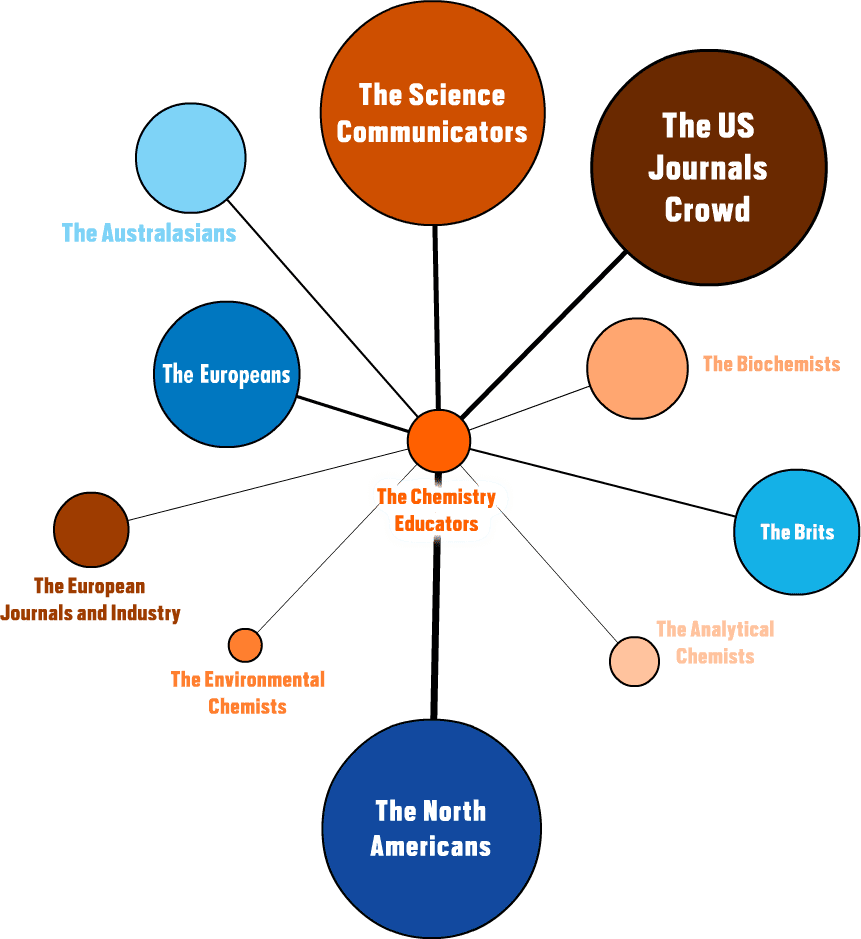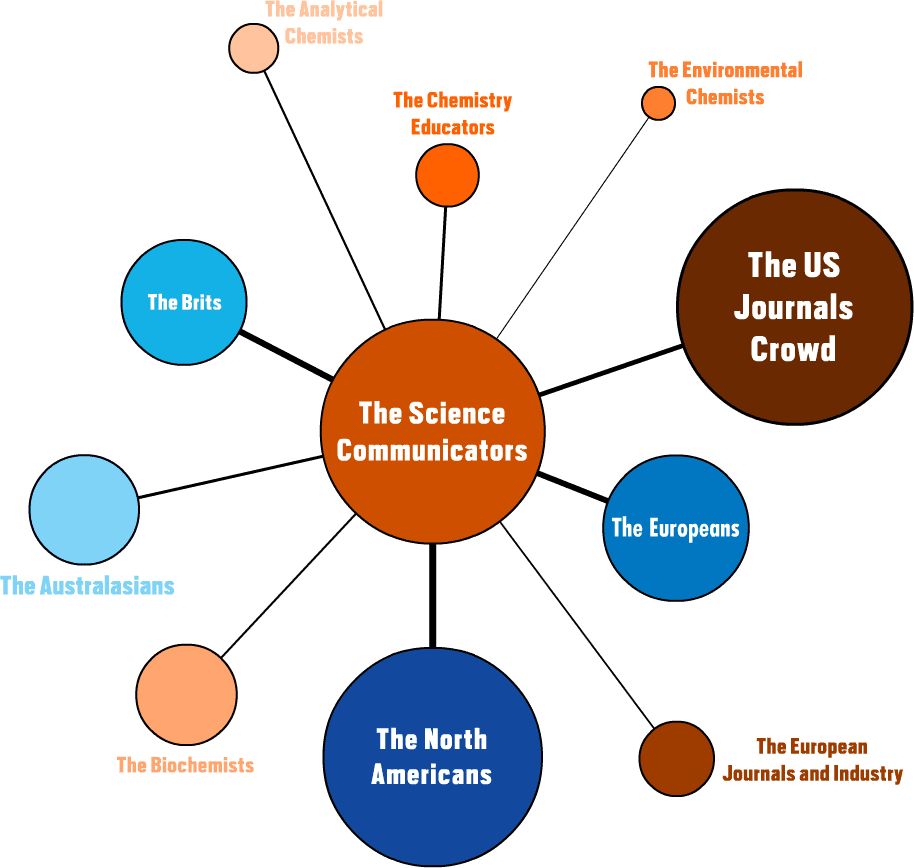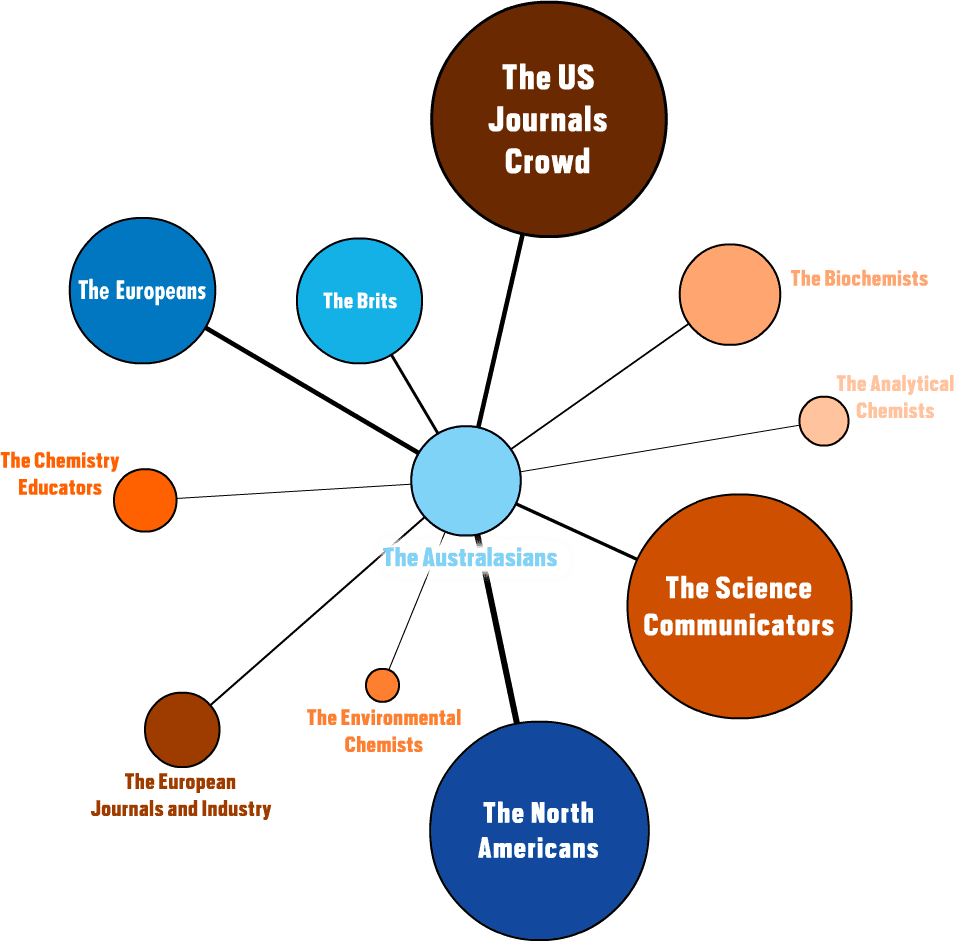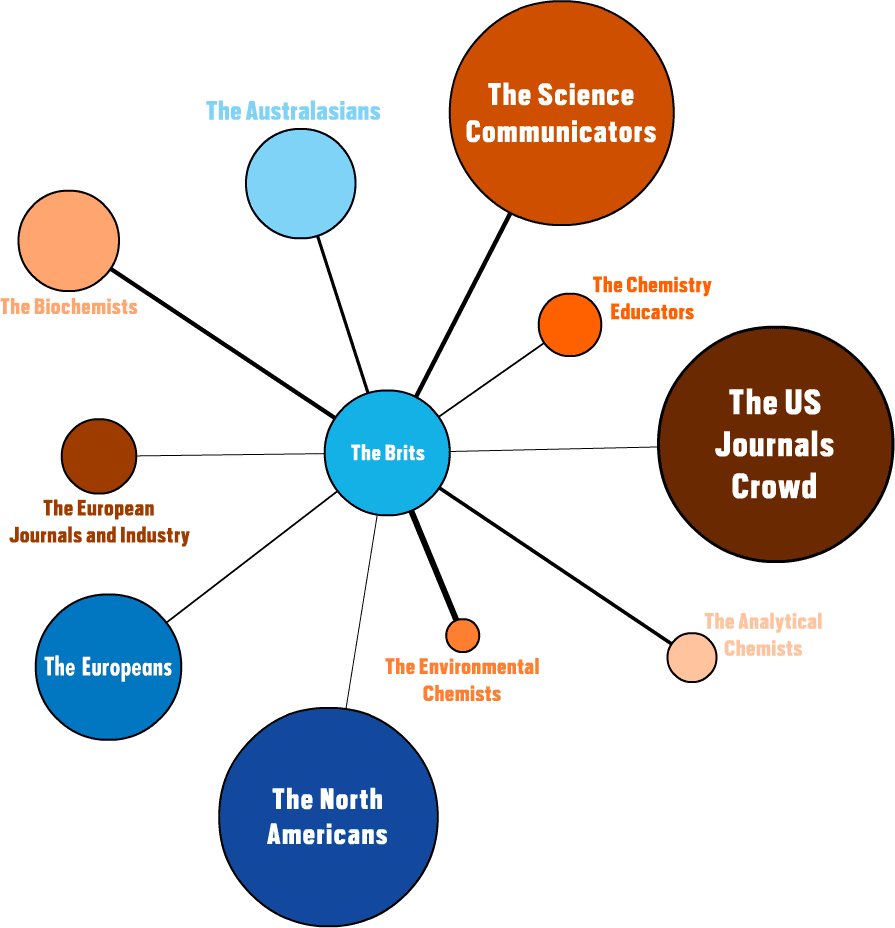Most popular hashtags
You might have noticed some hashtag trends across the silos. Here are the top 25 hashtags used by all 2,154 accounts. You can use these to reach the chemistry community on Twitter. The larger the word, the more popular it is. The most popular hashtag will come as no surprise. #RealTimeChem was used 9,348 times in 2018 by the accounts included in the network studied.
There are also some interesting regional differences in the hashtags chemists use on Twitter. For example, #womeninscience is a top hashtag for Europeans, but #womeninSTEM is more popular in the North American and Australasian groups. Another example is #ChemTwitter, which is exclusive to the North America–based silos.
At what time do you tweet?
These are the ideal times to tweet if you want to reach a specific silo. The darker colors are times of heavy tweeting in that silo, the lighter colors are more moderate, and no color is light tweeting.
Meet the silo breakers
Silo breakers are chemists on Twitter who bridge the gaps. For example, if you’re already on Twitter, you’ve probably encountered Chemjobber or Stuart Cantrill, no matter which silo you belong to.
Below are 9 silo breakers you may not know about. These accounts do more than retweet posts from outside their silos; they also take the time to comment on posts in at least 2 other silos, and most of these silo breakers interact with accounts outside their silos at least 10% of the time. Follow and watch these accounts, and follow the top 5 silo breakers of each silo if you want to expand your network into other territory.

Craig Fraser
Postdoc
Northwestern University
Joined January 2011
Silo
The North Americans
Communicates best with (in order of most to least):
The Analytical Chemists
The Brits
The Australasians
The European Journals and Industry
The Science Communicators
The Chemistry Educators
Twitter advice
"Being active on #ChemTwitter helped me make some very important connections, which ultimately led to me getting my current postdoc position at Northwestern University. It also played a role in me finding out about, and being selected for, the SciFinder Future Leaders program. So my advice is: do not be afraid to reach out; chemists are a friendly bunch and ultimately we all want to help each other!"
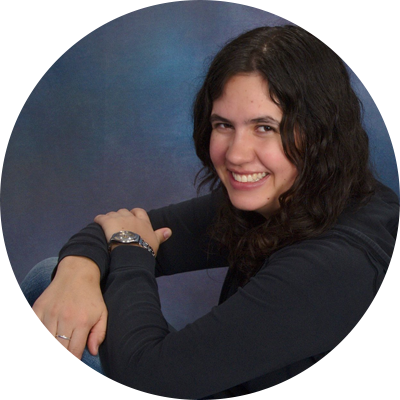
Katherine Crocker
Postdoc
Mailman School of Public Health at Columbia University
Joined October 2014
Silo
The Biochemists
Communicates best with (in order of most to least):
The Environmental Chemists
The North Americans
The Brits
The Chemistry Educators
The US Journals Crowd
My Twitter experience
"I noticed that if you want to use Twitter to learn anything, then the possibility is there. I've learned so much about communication, science, mentoring, writing, social justice, inclusion, advocacy, mental health, job application strategies, cooking, crafts, geology, poetry, and history that I probably would never have learned elsewhere. It's also a wonderful mechanism to be more connected as part of a diaspora of a minoritized group or as a postdoc who doesn't know anyone in a new town. It's a tremendous resource and in many ways a one-stop knowledge shop. I love it."
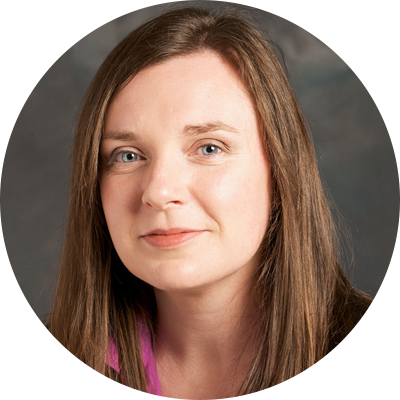
Lynn Dennany
Senior Lecturer
University of Strathclyde
Joined February 2015
Silo
The Analytical Chemists
Communicates best with (in order of most to least):
The Science Communicators
The European Journals and Industry
The Australasians
The North Americans
The Brits
Twitter advice
"It takes a while to get going, but stick with it and you can make great contacts as well as learn an enormous amount on a wide range of topics. Don't be afraid to ask questions; whatever the response, you can learn from it. It’s all about engaging in the process—don't just read, but put your thoughts out there as well."
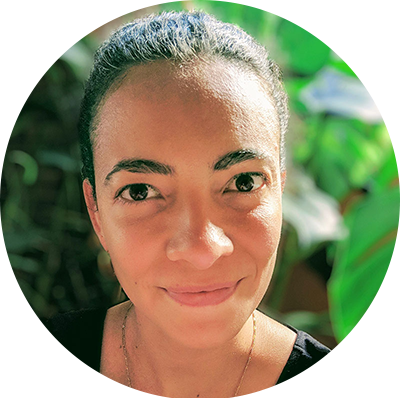
Marina Vance
Assistant Professor
University of Colorado Boulder
Joined June 2010
Silo
The Environmental Chemists
Communicates best with (in order of most to least):
The Brits
The European Journals and Industry
The US Journals Crowd
My Twitter experience
"My favorite moments on Twitter are when it feels like a relaxed chat room with great science conversations interspersed with funny GIFs. I learn a lot from engaging or even just reading others’ conversations."

Oriana Brea
Postdoc
Stockholm University
Joined February 2014
Silo
The European Journals and Industry
Communicates best with (in order of most to least):
The US Journals Crowd
The North Americans
My Twitter experience
"I enjoy the feeling of being part of a friendly community that sometimes is missing in other scientific environments."

Palli Thordarson
Professor
UNSW Sydney
Joined December 2014
Silo
The Australasians
Communicates best with (in order of most to least):
The Europeans
The Brits
The North Americans
The European Journals and Industry
The Science Communicators
The US Journals Crowd
The Analytical Chemists
The Biochemists
Twitter advice
"Be yourself!"
My Twitter experience
"It has now become the best way to discover new, exciting research!"

Michael Seery
Director of Teaching
University of Edinburgh
Joined May 2009
Silo
The Science Communicators
Communicates best with (in order of most to least):
The Chemistry Educators
The Analytical Chemists
The Brits
The North Americans
The Australasians
Twitter advice
"Reach out, share your ideas. Don't be afraid to connect. People enjoy conversing. Remember that listening is important—Twitter is useful when it involves dialogue. If you can showcase others, do so."
My Twitter experience
"I was surprised how much Twitter use makes those awkward first meetings at conferences much easier."

Maria Gallardo-Williams
Teaching Associate Professor
North Carolina State University
Joined August 2012
Silo
The Chemistry Educators
Communicates best with (in order of most to least):
The Environmental Chemists
The Analytical Chemists
The Brits
The European Journals and Industry
The Australasians
The Europeans
The North Americans
The US Journals Crowd
My Twitter experience
"I think one of my favorite things about Twitter is how it has allowed me to connect with so many fantastic women in science (and baking and knitting). They’re more than I could ever have met in real life, and they have such a diverse collection of ideas and opinions."

Karrera Djoko
Assistant Professor
Durham University
Joined November 2015
Silo
The Brits
Communicates best with (in order of most to least):
The Biochemists
The Australasians
The Environmental Chemists
The Chemistry Educators
My Twitter experience
"I found a mentor through Twitter. I found a collaborator through Twitter. I found a community of local new principal investigators on Twitter (the UK New PI Slack!). I got invites to give seminars through Twitter. The interactions I've had on Twitter really helped me get set up and settled as a new PI. Coming from Australia, Twitter helped me build my initial support network in the UK! Now I just need to find a student/postdoc/team member on Twitter!"
Our methods
Twitter accounts were initially compiled using commonly used chemistry hashtags, as well as lists from popular chemistry accounts such as @RealTimeChem. We used text mining analysis validation procedures to confirm that the 2,154 accounts in this study were chemistry accounts. All accounts had to be active and have a minimum of 100 followers. Interactions are defined as likes, retweets, and comments. Data were collected from Jan. 1, 2018, to Dec. 31, 2018. Data were collected using English keywords and hashtags, so the bulk of the accounts in this analysis are from English-speaking countries. Location data were available for 1,567 of the accounts included in the study. The breakdown of those accounts is as follows: less than 1% Africa, 51% Americas, 2% Asia, 41% Europe, and 5% Oceania.
For more information about the data analysis, please stay tuned for a future peer-reviewed publication by Vincent-Ruz.
Credits
Research: Paulette Vincent-Ruz
Story: Dorea Reeser
Editing: Sabrina Ashwell, Jyllian Kemsley, and Amanda Yarnell
Design and illustration: Rob Bryson and Kay Youn
Illustration: Chris Gash
Development: Tchad Blair

